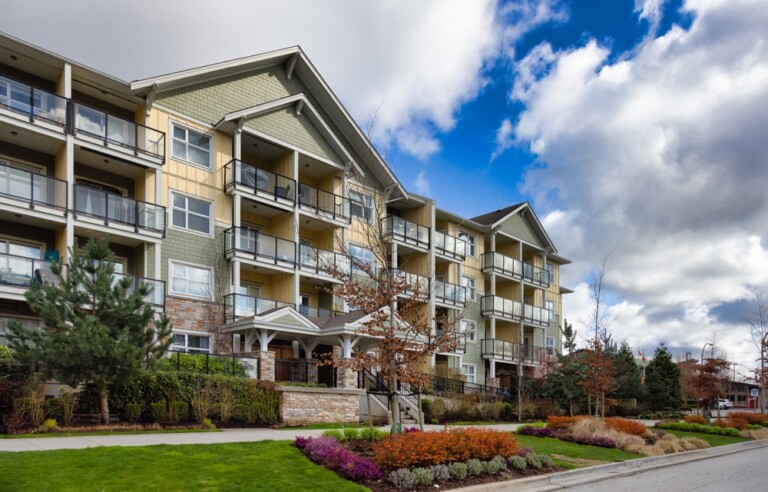
We previously reported on the decision of JVD Installations Inc. v Skookum Creek Power Partnership, 2020 BCSC 374, where the BC Supreme Court upheld the validity of builders liens filed by a subcontractor lien claimant over certain parcels of land that over which a transmission line ran. The lien claimant had performed concrete work and mechanical work to a hydroelectric facility connected to a transmission line. The hydroelectric facility was located on unregistered Crown lands and was not, itself, lienable – causing the lien claimant to file its claim of lien over the land parcels over which a transmission line connected to the hydroelectric facility ran. None of the work performed by the subcontractors was performed in connection with the transmission line. This decision was appealed by the defendants to the claim, which were comprised of the owner and contractor parties.
The BC Court of Appeal overturned the decision of the Supreme Court in JVD Installations Inc. v Skookum Creek Power Partnership, 2022 BCCA 81.
The Appeal
The primary question on appeal was whether or not the trial judge erred in determining if the lien claims filed by JVD were invalid. For reasons summarized below, the Court of Appeal found that the trial judge did err in upholding the lien claims – finding that as JVD had not performed any work to the transmission line, it was not entitled to place liens against the transmission line lands.
In coming to this finding, the Court of Appeal considered prior cases where lien claimants had filed liens on lands related to improvements, but on which the lien claimants had not performed work, including a leading decision, Kettle Valley Contractors Ltd. v. Cariboo Paving Ltd. (1986), 26 DLR (4th) 422 (BCCA). In Kettle Valley, a subcontractor lien claimant performed work in a gravel pit generating materials for a road paving project that was taking place on a property a distance away from the gravel pit. The subcontractor filed its claim of lien over the property on which the improvement was located (not the gravel pit), and the Court of Appeal was required to determine if the lien claim was valid. In Kettle Valley, the Court of Appeal found that as the work performed by the subcontractor lien claimant was essential to and integrated into the improvement, its lien claim was valid despite the fact that the work occurred away from the land over which the lien was claimed.
The Court of Appeal in JVD Installations also considered the decision of Boomars Plumbing & Heating Ltd. v. Marogna Bros. Enterprises Ltd., (1988), 51 DLR (4th) 13 (BCCA) wherein the main issue before the Court of Appeal was whether a subcontractor who claimed a lien against the land on which a motel project was located had a valid claim of lien for work performed in installing a sewage pump on municipal land adjacent to the motel property. The sewage pump was to serve the motel as well as a subdivision. The Court of Appeal agreed with the lower court’s decision that no lien for work done to the sewage pump could be made against the motel property as the work and materials were supplied off of the lands in respect of a project off of the lands (meaning that there was less of a connection to the lands than in the Kettle Valley decision.
The Court of Appeal also considered other B.C. Supreme Court decisions which considered when work constructed outside of the boundaries of liened property have been found to be improvements to the property, including Pedre Contractors Ltd. v. 2725312 Canada Inc and 360 Fibre Ltd., 2004 BCSC 1112 and Sandhill Development Ltd. v. Green Valley Developments Ltd., 2008 BCSC 1646. In Pedre Contractors, a subcontractor lien claimant advanced a claim of lien against property on which a communications centre was located for fibre optic conduits that were installed under streets and extended for some distance away from the communications centre. The Court in that case found that the conduits installed both inside and outside the boundaries of the property constituted a single improvement and that the subcontractor was able to claim a lien for all work and services performed, including for the work and services performed outside of the liened property. In Sandhill, the Court found that a subcontractor lien claimant was permitted to file a claim of lien against properties owned by an owner developer in subdivision where the subcontractor had delivered materials and performed work and services for the construction of roads, even though only a portion of the roads were on the liened property.
In JVD Installations, the Court of Appeal considered the principles of the Builders Lien Act as applied in Kettle Valley and found that it is only appropriate to permit a lien to be filed against property where the claimant did not perform work where the improvement can be understood as single improvement to accord with the principle in the Builders Lien Act that the land that receives the benefit of the improvement bears the burden and risk of any lien claim being filed against. The Court of Appeal further clarified that consideration of whether or not the improvement is a single improvement that binds the land in this way is not addressed by asking the question of whether the work was “interdependent” to the improvement as the trial judge had done in the lower court decision. In this case, as the subcontractor had done no work to the transmission line or otherwise performed work or services to the transmission line land, it has no claim to lien against those lands. The hydroelectric plant and the transmission line were not a single improvement as they are: (1) functionally distinct; (2) physically remote from one another; and (3) constructed at different times (and by different constructors).
The Court of Appeal stated that, although it is not the case that a lien can never be filed in connection with works that are performed outside the boundaries of a parcel of property, there just must be careful consideration as to whether the improvement itself extends beyond the boundaries of the property.
Takeaways
Although the Court of Appeal’s decision has been stated by it as being consistent with the principles stated in Kettle Valley, it is clear that there are additional factors that must be considered by potential lien claimants seeking to assert lien rights over land where it did not perform work. Although lien claimants still have the right to assert lien claims over properties where they have not performed work, the work for which they are claiming the lien must be for a single improvement that has benefited the land over which the lien is claimed.
Lien claimants who are considering what property they may be able to lien should carefully consider the scope of the work they performed prior to filing their claim. If the work performed is not connected to the liened land by a single improvement, their lien claim may be invalid.



